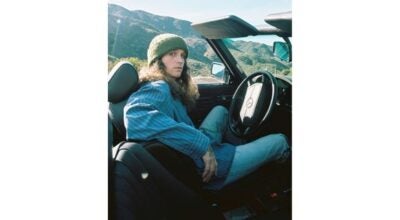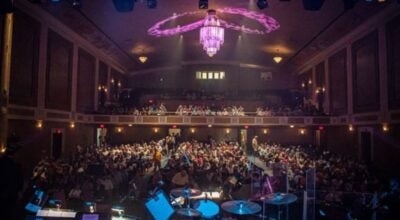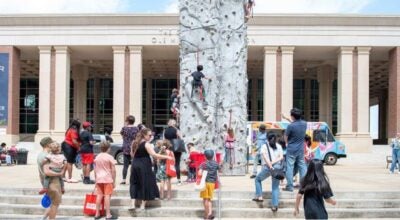This Mississippi Road Trip Will Change the Way You See the Magnolia State
Published 10:08 am Tuesday, December 19, 2017
[vc_row full_width=”stretch_row” full_height=”yes” columns_placement=”top” css=”.vc_custom_1513696918510{background-position: center !important;background-repeat: no-repeat !important;background-size: cover !important;}”][vc_column][vc_column_text]
The woman sitting in the bedroom of the Elvis Presley Birthplace, a tiny shotgun house that ranks second only to Bethlehem in deity origins for fans worldwide, was properly reverential regarding the King of Rock ‘n’ Roll, proudly announcing that she witnessed him herself at a Tupelo concert in 1956.
[/vc_column_text][vc_column_text]
His father, Vernon, didn’t fare so well in her story.
“I’ll put this as politely as I know how,” she told a group of visitors that included two couples from England. “Vernon did work for a little while.”
But she is always amused, she went on, when she reads some account of how the family’s abrupt departure from Tupelo in 1948 was so that Vernon could “seek work” in Memphis.
She rolled her eyes.
“I know he never seeked work in his life,” she said.
Ah, Mississippi. It seems that for every cultural icon, we have at least one scoundrel. Probably more.
I’d arrived in Tupelo as part of a combination pilgrimage and bicentennial celebration, a 10-day road trip intended to touch on some of the quintessential Mississippi sites as recommended by readers.
Along the way I learned several lessons:
If you plan such a trip of more than a week, try to make it a week that doesn’t include a Sunday. Mississippi is closed on Sundays.
When taking backroads, as you should, try to avoid consuming liquids on a driving day. Rest stops are few and far between.
And be prepared for some discoveries to be happy, and others less so. (More on that later.)
[/vc_column_text][/vc_column][/vc_row][vc_row][vc_column][vc_tta_accordion][vc_tta_section i_icon_fontawesome=”fa fa-calendar” add_icon=”true” title=”DAY 1″ tab_id=”1513697107167-3f385258-674d”][vc_single_image image=”80295″ img_size=”full” alignment=”center” style=”vc_box_shadow” onclick=”link_image” css_animation=”fadeIn”][vc_empty_space][vc_column_text]
Day 1 began in Jackson, where the first order of business was the Old Capitol Museum, which bills itself, among other things, as “the soul of the state.”
I found it changed in various ways since my first visits as a high school student, but substantially the same. Considering that it was basically abandoned after the New Capitol opened in 1903 and attempts were made to demolish it, it’s a wonder it exists at all.
Of course, it’s impossible to visit without reflecting on the most momentous event to have taken place there, the secession vote in January 1861 that set the course for the state over every succeeding hour, day and year since.
But it’s also the spiritual home, now, of the Mississippi Hall of Fame, with portraits of members like Eudora Welty, Medgar Evers, Fannie Lou Hamer, Muddy Waters, Walter Anderson, and Tennessee Williams.
And Jefferson Davis.
[/vc_column_text][/vc_tta_section][vc_tta_section i_icon_fontawesome=”fa fa-calendar” add_icon=”true” title=”DAY 2″ tab_id=”1513697302312-261152ed-4661″][vc_single_image image=”80296″ img_size=”full” alignment=”center” style=”vc_box_shadow” onclick=”link_image” css_animation=”fadeIn”][vc_empty_space][vc_column_text]
Day 2 found me at the Mississippi Agriculture and Forestry Museum, the late Agriculture Commissioner Jim Buck Ross’s monument to (himself and) the two industries that form the backbone of the state’s economy.
I’d remembered it as a minor attraction, a site for the Hog Wild barbecue competition, maybe a school trip for fifth graders. But this visit was intriguing from the get-go, starting with a giant Greg Harkins rocker (I’m a fan) followed by a video paean to catfish (also a fan).
“It’s great tasting,” the video accurately advised. “It’s friendly to the environment. It’s 100% all-American.”
There were huge model train exhibits of the forestry industry, and other exhibits on “The Sawmill Boom,” “Cotton Mechanization,”
“The History of Fertilizer.” (“The first phosphate fertilizer was ground bones.”) Large displays of a vast array of tools with which to cut and shape wood.
Somebody probably ought to uncross the eyes of the model farmer sitting on a porch in one display. But all of it somehow left me feeling like – a fifth grader on a good school trip.
Better still were the outbuildings, like the McDavid cabin, a ramshackle structure built in 1825 and inhabited until 1935 that gives a better idea of how most of our Mississippi forbears lived than do the cotton-built mansions of Natchez.
No offense to Natchez, which is coming up later.
After the Agriculture Museum came its next-door neighbor, the Mississippi Sports Hall of Fame and Museum, a reminder of not only our devotion to sports but also the number of sports heroes our relatively small state has produced.
I’d say Archie is No. 1, but I’m partial.
[/vc_column_text][/vc_tta_section][vc_tta_section i_icon_fontawesome=”fa fa-calendar” add_icon=”true” title=”DAY 3″ tab_id=”1513697338975-3ba6abdc-1e2e”][vc_single_image image=”80297″ img_size=”full” alignment=”center” style=”vc_box_shadow” onclick=”link_image” css_animation=”fadeIn”][vc_empty_space][vc_column_text]
Day 3 took me to the final day of the Neshoba County Fair, an event I had scheduled the whole trip around.
To their credit, the good people of Jackson County, my home, are smart enough not to hold their county fair in the heat of July and August. Having said that, Neshoba County folks created what is arguably (go ahead, argue) Mississippi’s greatest event.
If going, I’d suggest you select an overcast day, plan to visit someone with an air-conditioned cabin and be present for the political speeches – none of which I did.
What I did do was watch some horse races, circle the grounds a couple of times to marvel at the spectacle, fight the heat with an iced lemonade I was tempted to pour over my head and search in vain for any sign urging me to “Vote Democratic.”
Is “Yellow Dog Republican” a term?
[/vc_column_text][/vc_tta_section][vc_tta_section i_icon_fontawesome=”fa fa-calendar” add_icon=”true” title=”DAY 4″ tab_id=”1513697384852-848050a1-e4d9″][vc_single_image image=”80298″ img_size=”full” alignment=”center” style=”vc_box_shadow” onclick=”link_image” css_animation=”fadeIn”][vc_empty_space][vc_column_text]
Day 4 took me to the aforementioned Tupelo, where I had been advised on good authority to seek out the offerings of Johnnie’s Drive-In.
This I did and was presented with a choice of two types of hamburger: one all-meat, one with added flour and known as a dough burger. In addition to stretching the meat, I was told the flour was supposed to lend a crispier exterior.
Long and short of it: Get both, as I did. They’re not big.
The Elvis complex was, of course, the primary purpose of the Tupelo stop, and the tiny birthplace itself was not the only attraction. A souvenir shop serves up the standard fare of refrigerator magnets, sunglasses, T-shirts and the like, along with an 18-inch Elvis statue, if you’ve a mind to shell out $495 ($295 for the 12-inch version).
A theater in the complex plays the obligatory Elvis hagiographic childhood film, there’s a chapel in case you want to get married on hallowed ground, and displays of assorted Elvis outfits and other relics like his certificate for the 7th-degree black belt in taekwondo.
O.K., it’s not Graceland. But there’s something to be said for that.
I went on from there to Oxford, where I did something I’d somehow neglected to do during my days at Ole Miss: take in Rowan Oak, famed home of William Faulkner.
The house, a relatively modest structure, is pretty much what you’d hope for it to be: writerly, I’d say. Homey.
Faulkner’s quoted in one of the displays as having said that the “tools I need for my trade are paper, tobacco, food, and a little whiskey,” which in my mind makes for a pretty inviting trade.
There’s an empty bottle of Jack Daniel’s, which I take as a brand endorsement. One room has the outline of a book written on the walls. He apparently banned radios and air-conditioning during his lifetime there.
Conclusion drawn: Faulkner may have been a bit of an odd duck.
I capped off the day at another place I didn’t go while in college, because it wasn’t there then: Square Books. Much acclaim has attached itself to this place, and it’s easy to see why: It’s pretty much a book-lover’s paradise.
I wanted one of just about everything, particularly from the wall of Mississippi authors.
A sign offered the 1,600-page, 8.8-pound Mississippi Encyclopedia for $70, “or $7.95 a pound – same cost as catfish fillets.”
I didn’t crunch the math or check the price of catfish, but if more bookstores served up this kind of fun marketing, there’d be more bookstores.
[/vc_column_text][/vc_tta_section][vc_tta_section i_icon_fontawesome=”fa fa-calendar” add_icon=”true” title=”DAY 5″ tab_id=”1513697438999-896b3b33-6670″][vc_single_image image=”80300″ img_size=”full” alignment=”center” style=”vc_box_shadow” onclick=”link_image” css_animation=”fadeIn”][vc_empty_space][vc_column_text]
Day 5 had me headed to Vicksburg, which was not my intent. My intent was to hit Clarksdale and the Delta Blues Museum, followed by Greenville and Doe’s Eat Place. But (see rule above), both are closed on Sunday.
The Vicksburg National Military Park is not, so there I went. Some folks hike it, but I drove the winding road, stopping from time to time to read the historical markers, gaze at the monuments, and try to envision what went on there during those trying days at the height of the Civil War.
Which I couldn’t. Here again, a video, shown in the visitor center, lent context to “the largest, most complex campaign of the Civil War.”
I’ve been dismissive of Vicksburg at times, no doubt unfairly. But the park is probably where all the Civil War statues in Mississippi should be relocated, for safekeeping.
[/vc_column_text][/vc_tta_section][vc_tta_section i_icon_fontawesome=”fa fa-calendar” add_icon=”true” title=”DAY 6″ tab_id=”1513697484801-a4d158f4-c467″][vc_single_image image=”80301″ img_size=”full” alignment=”center” style=”vc_box_shadow” onclick=”link_image” css_animation=”fadeIn”][vc_empty_space][vc_column_text]
Day 6 had me covering the ground I was supposed to hit on Day 5, which meant driving back up Highway 61.
More advice to fellow road trippers: Try not to do this, unless you have a strong fascination with extensive, flat fields of agricultural greenery.
Once I got to the Blues Museum, though, I knew the doubling back was worth it. You could encase my knowledge of the blues in a single paragraph, but I was engrossed from the first display I saw, featuring Charlie Musselwhite, the great harmonica player who of course I’d never heard of but probably should have.
From there: B.B. King! John Lee Hooker! Muddy Waters’ actual log cabin! The artwork “Woman in Coffin” by Son Thomas, which I’d actually seen in Son’s house in Leland on a visit in 1992! (Long story.)
And if the museum itself weren’t enough, across the street is Ground Zero, Morgan Freeman’s blues club. A bit slow at 3 in the afternoon when I was there, but I got the distinct impression things change as the day and evening wear on.
At the next stop, I was primed for disappointment. When a number of people have told you that a place serves the best steak they’ve ever eaten, you have to be prepared for a letdown. Maybe your cow suffered from malnutrition. Maybe the cook is having a bad day. Maybe you should have gotten the ribeye, instead of the filet.
With that in mind: I got the best steak I’ve ever eaten.
And no tamales, which the waitress seemed to be astonished that I would pass up. But I’m not a big tamale eater. And I certainly don’t want them taking up stomach space that steak could be occupying.
[/vc_column_text][/vc_tta_section][vc_tta_section i_icon_fontawesome=”fa fa-calendar” add_icon=”true” title=”DAY 7″ tab_id=”1513697527778-323ce1be-308d”][vc_single_image image=”80302″ img_size=”full” alignment=”center” style=”vc_box_shadow” onclick=”link_image” css_animation=”fadeIn”][vc_empty_space][vc_column_text]
From Greenville came the long haul on Day 7 (yet again on 61) to Natchez, where I crossed denominational lines to visit St. Mary Basilica, a strikingly lovely church that was once the cathedral of the Catholic Diocese of Natchez. I then took communion, of sorts, in the form of a beer at Bowie’s Tavern, followed by further worship at the Under the Hill Saloon.
I don’t know; there’s just something about Natchez that inclines me to bend an elbow. Maybe it’s the fact that I got married there one time. (It didn’t take.) Maybe it’s the abundance of inviting opportunities. King’s Tavern and the Corner Bar are a couple of my other favorites.
If you’re reading this as a travel guide you should, of course, hit a mansion or three – Longwood, Dunleith and Melrose are a good start. But I have, so I didn’t.
Oh, I forgot: On the way to Natchez I passed through Port Gibson, where I was disappointed that the famous Hand Pointing to Heaven atop the First Presbyterian Church was away being regilded. It’s back now, though.
I also went again to the Windsor Ruins, the 23 towering Corinthian columns pretty much in the middle of nowhere that are all that is left of what was once a majestic, antebellum Greek Revival mansion. The lonely columns somehow stand now as a symbol of the Faded Glory of the South, though they should be better known as a symbol of the Hazards of Smoking, since the home was destroyed in the 1890s in a fire supposedly caused by a carelessly discarded cigar or cigarette ash.
[/vc_column_text][/vc_tta_section][vc_tta_section i_icon_fontawesome=”fa fa-calendar” add_icon=”true” title=”DAY 8″ tab_id=”1513697599609-8d8c59c1-1368″][vc_single_image image=”80303″ img_size=”full” alignment=”center” style=”vc_box_shadow” onclick=”link_image” css_animation=”fadeIn”][vc_empty_space][vc_column_text]
Day 8 got me to Biloxi and Beauvoir, the last home of Jefferson Davis, which I had debated skipping because of its fundamental association with the lowest point in Mississippi history.
But I decided to go, for precisely that reason. And, again, appreciated it for what it is: the last redoubt of the Southern mythology.
An eager worker asked me what I thought could improve the experience. Get Jefferson Davis exhumed from Richmond and buried here, I told him. He seemed to like that idea.
From there it was on to Ocean Springs and a museum dedicated to the life and work of a decidedly less controversial man, the artist Walter Anderson. I’m a rather indifferent fan – love his cats, not a whole lot else – but there’s no disputing his genius.
Or his quirkiness.
The Community Room walls are covered by an Anderson mural that I was told is valued at $30 million. I shudder to think what the whole place would be worth. Thank goodness Hurricane Katrina didn’t push water that far.
Pascagoula’s contribution to the trip was what was known in my early days as the Old Spanish Fort. It was neither Spanish, nor a fort, but it was old – the oldest structure in the state, oldest confirmed in the Mississippi Valley, built in 1757.
It’s now known as the LaPointe-Krebs House and Museum. Unfortunately, it is also in the midst of a restoration that leaves little to see but an exterior undergoing extensive work. There is a visitor center with an amiable host, Marks Sokolosky-Wixon, executive director of the board overseeing the work, who can fill you in on all the particulars, including the difficulty of securing money for such a project.
[/vc_column_text][/vc_tta_section][vc_tta_section i_icon_fontawesome=”fa fa-calendar” add_icon=”true” title=”DAY 9″ tab_id=”1513697637287-e19ca8fd-4ab1″][vc_single_image image=”80304″ img_size=”full” alignment=”center” style=”vc_box_shadow” onclick=”link_image” css_animation=”fadeIn”][vc_empty_space][vc_column_text]
Day 9 was Meridian, where I had been directed to eat at Weidmann’s, which has apparently been feeding people since 1870 and to take in the Jimmie Rodgers Museum.
The former I recommend. (Catfish, hush puppies, black-eyed peas, turnip greens.) The latter less so, but I attribute that to the fact that I’m just not a Jimmie Rodgers fan, despite the (slightly misspelled) name.
I know, he was famed as the Singing Brakeman. Many consider him the Father of Country Music. The hostess was solicitous and dedicated to her subject. I just wasn’t buying. I don’t know. Maybe it’s the yodeling.
[/vc_column_text][/vc_tta_section][vc_tta_section i_icon_fontawesome=”fa fa-calendar” add_icon=”true” title=”DAY 10″ tab_id=”1513697672816-4223135a-ea07″][vc_column_text]
Day 10 was back in Jackson, to unwind and assess, have lunch with former newspaper colleagues I hadn’t seen in decades, and review those happy and less so discoveries.
Among the happy ones: The rooftop restaurant/bar 10 South on Washington Street in Vicksburg offers the finest view of the Mississippi that I have ever enjoyed – including the time I floated over the river at Natchez in a hot air balloon.
Among the less happy: The wonderful if slightly seedy Eola Hotel in Natchez is closed. That explains why I got no response to my online request for a reservation.
Also, I wish that mockingbird, the state bird, hadn’t made its kamikaze flight into the grill of my car outside Vicksburg.
Still, all in all, a success. Our state takes a lot of abuse, some of it deserved. But at practically every turn in the road, there’s a reminder of how much there is to love about it, too. My trip, as always, was a welcome Mississippi booster shot.
[/vc_column_text][/vc_tta_section][/vc_tta_accordion][/vc_column][/vc_row]





